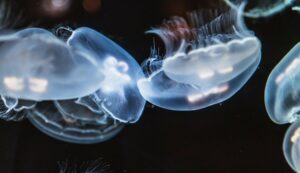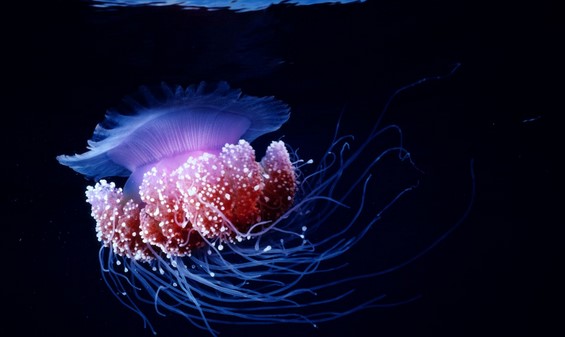The natural world never ceases to amaze us with its wonders, and one of the most mesmerizing phenomena is bioluminescence. In this article, we will delve into the enchanting world of bioluminescent organisms, where creatures illuminate the depths of the ocean, the darkness of caves, and even the night skies.

The Science of Bioluminescence:
Bioluminescence is the production and emission of light by living organisms. Unlike incandescence, which involves the heating of an object until it glows, bioluminescence is a chemical process. Here’s how it works:
- The Light-producing Chemical Reaction: Bioluminescence is generated through a chemical reaction involving luciferase enzymes, luciferin molecules, oxygen, and other cofactors. When luciferin and oxygen combine in the presence of luciferase, they produce light.
- Controlled Light Emission: Bioluminescent organisms have specialized structures or cells called photophores that control the release of light. This allows them to flash, flicker, or glow as needed.
Diversity in Bioluminescent Life:
- Marine Bioluminescence: The ocean is teeming with bioluminescent life, from microscopic plankton to giant squids. Many deep-sea creatures use bioluminescence for camouflage, communication, or predation.
- Fireflies: Fireflies are perhaps the most well-known bioluminescent insects. They use their glowing abdomens to attract mates with unique flashing patterns.
- Glow-in-the-Dark Fungi: Some species of mushrooms and fungi emit an eerie green glow in dark, damp environments, creating an otherworldly atmosphere in forests and caves.
- Dinoflagellates: These single-celled marine organisms create stunning bioluminescent displays when disturbed. Swimmers and boats passing through areas with high dinoflagellate populations can witness sparkling trails in the water.
- Glowing Jellyfish: Certain species of jellyfish, such as the crystal jellyfish, produce a soft, ethereal glow. Their bioluminescence can serve as both a defense mechanism and a lure for prey.
The Role of Bioluminescence in Nature:
- Camouflage: Some animals use bioluminescence to blend in with their surroundings. Counterintuitively, they become less visible in the presence of bioluminescent predators.
- Communication: Fireflies and some deep-sea creatures use bioluminescence to communicate with potential mates or to warn off rivals.
- Predation: Some predators, like the anglerfish, dangle a bioluminescent lure in front of their mouths to attract prey in the pitch-black depths of the ocean.
- Defense: When threatened, some bioluminescent organisms release bursts of light to confuse and deter predators, giving them a chance to escape.
- Symbiosis: Certain animals form symbiotic relationships with bioluminescent bacteria. The bacteria provide light, while the host organism offers protection and nutrients.
Conclusion
The world of bioluminescent organisms is a testament to the astonishing diversity and ingenuity of life on our planet. From the mysterious depths of the ocean to the enchanting sights of fireflies in a summer night’s sky, bioluminescence captivates us with its beauty and leaves us in awe of the natural world’s many marvels.




